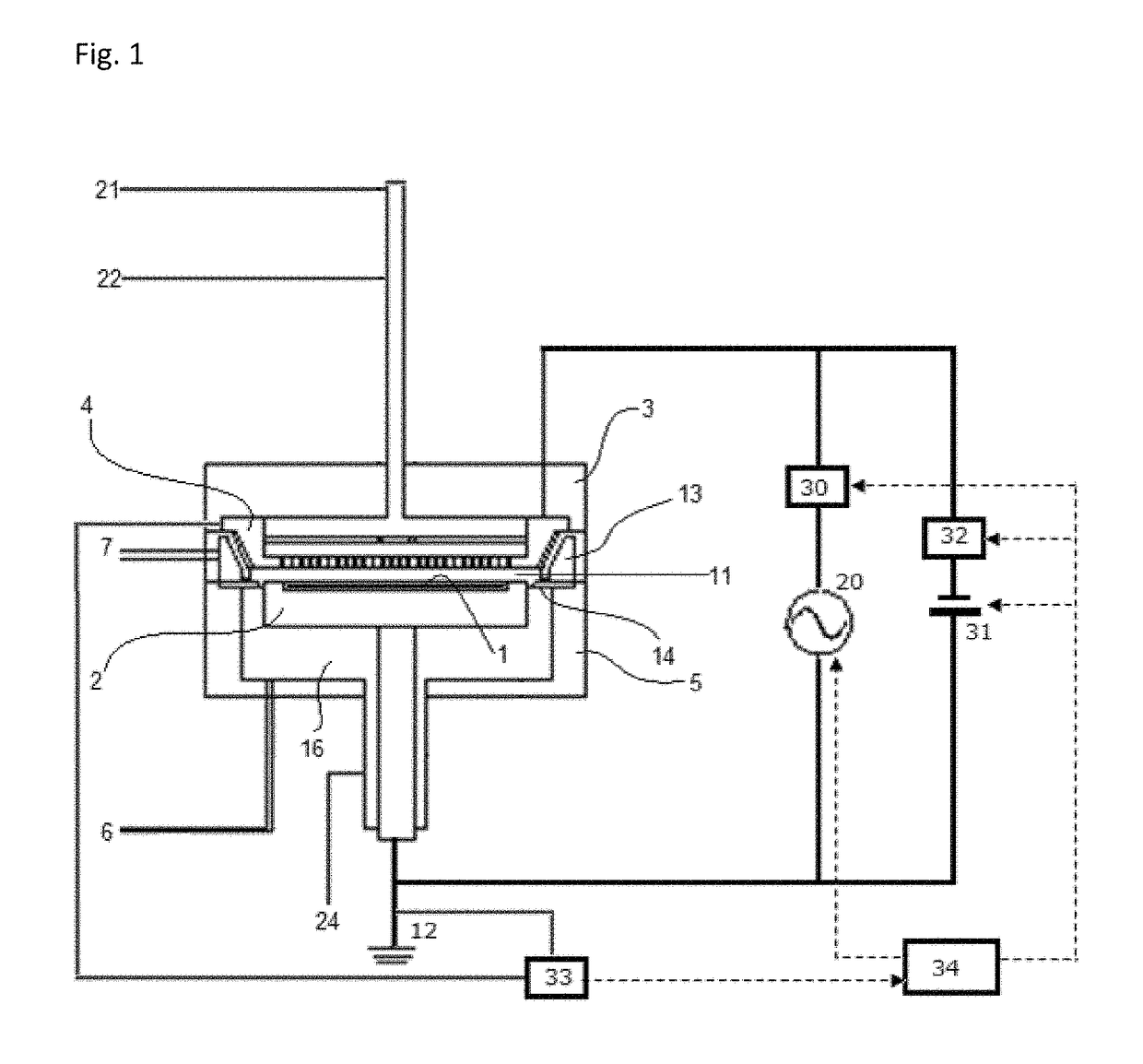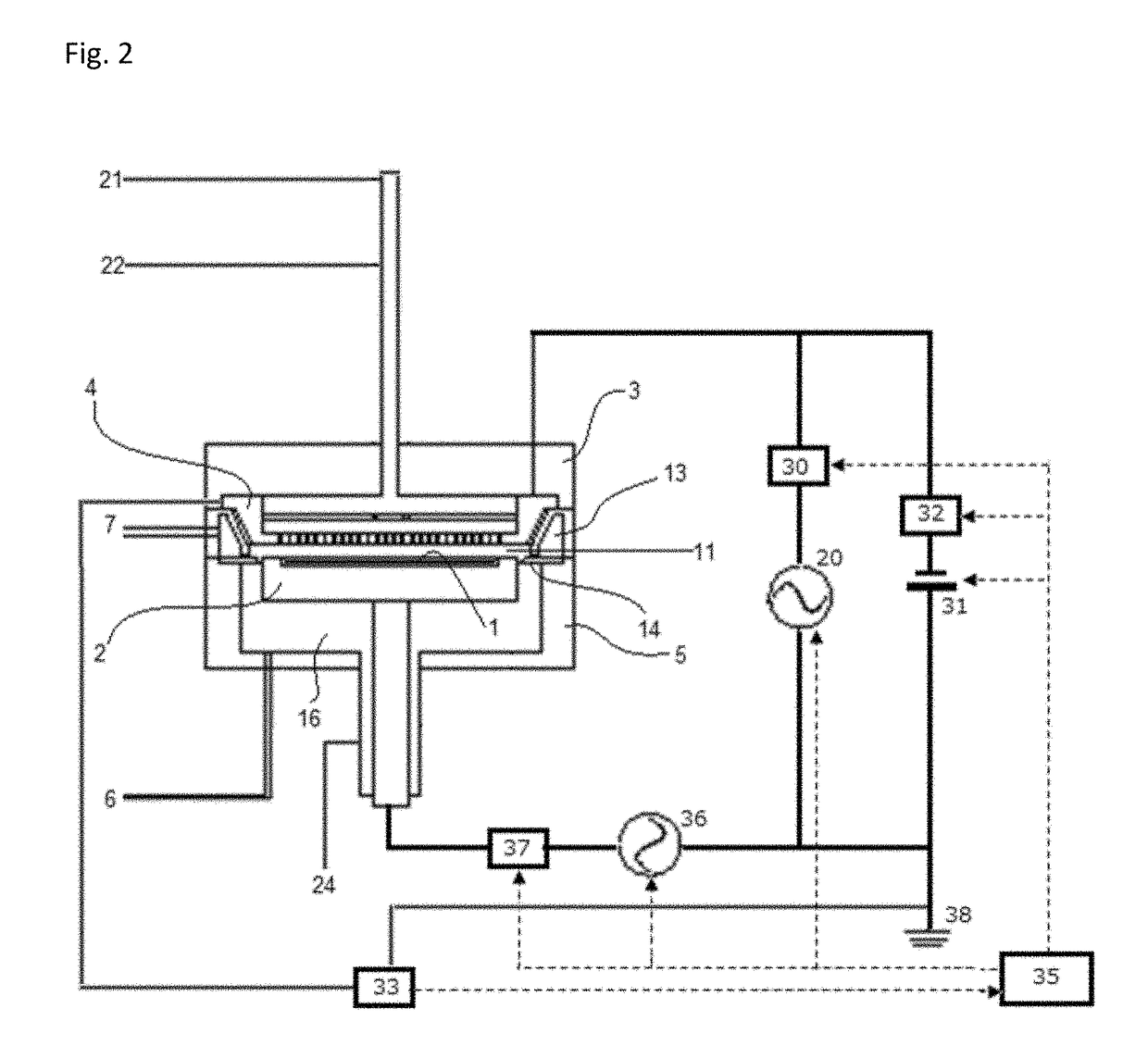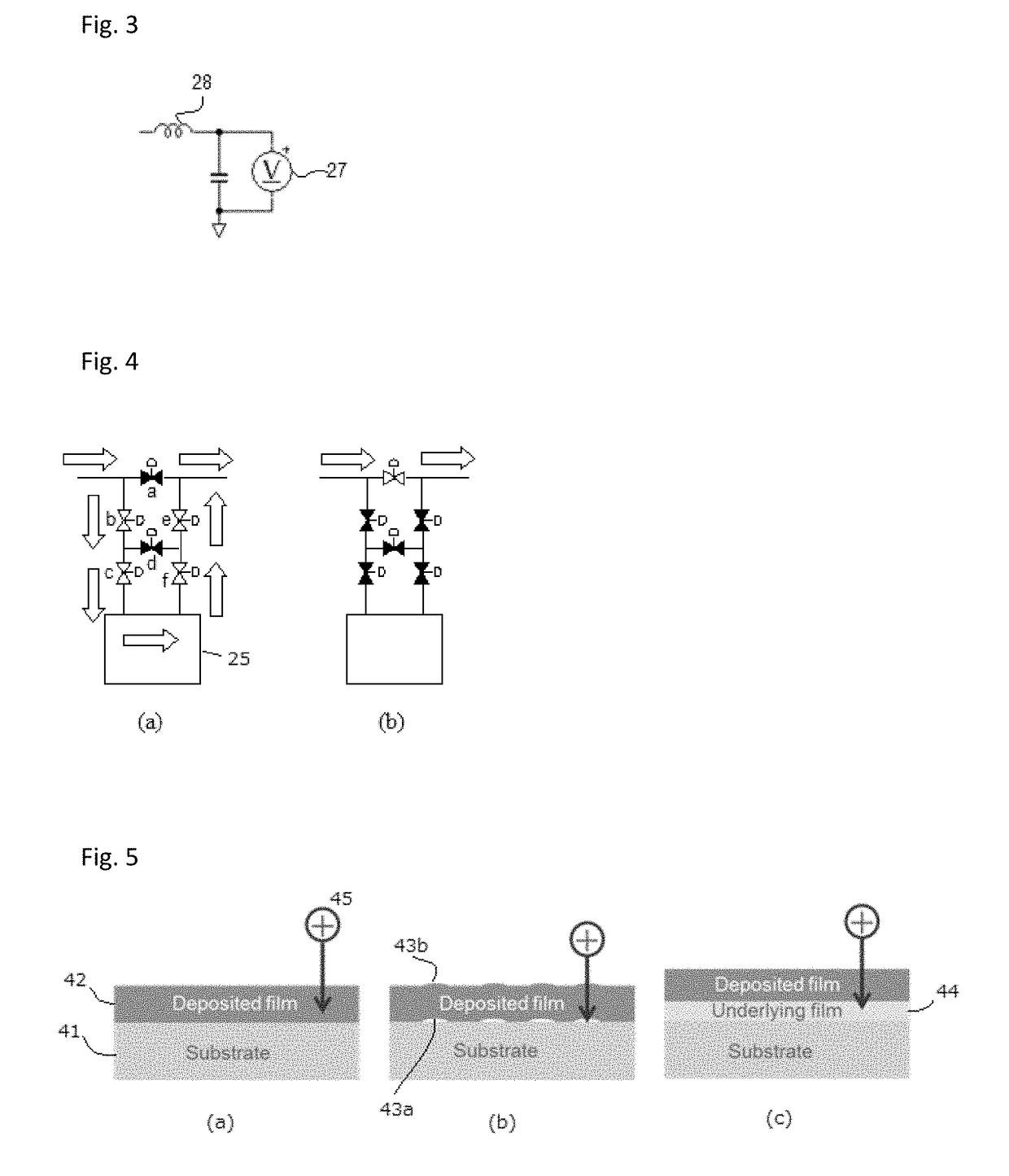Method of depositing film by peald using negative bias
- Summary
- Abstract
- Description
- Claims
- Application Information
AI Technical Summary
Benefits of technology
Problems solved by technology
Method used
Image
Examples
example 1
Prophetic
[0048]On a Si substrate (having a diameter of 300 mm and a thickness of 0.7 mm) having an organic film (polyimide film), a SiOCN film having a thickness of about 30 nm is deposited by PEALD using the apparatus illustrated in FIGS. 1, 3, and 4 using the sequence illustrated in FIG. 8, under conditions using an aminosilane ((3-aminopropyl)trimethoxysilane, APTMS) as a precursor, H2 as a reactant (H2 plasma), and Ar as a carrier gas, wherein the temperature of a bottle for the precursor is set at room temperature, the flow rate of H2 gas is about 100 sccm, and the flow rate of Ar gas is about 600 sccm, and the pressure is about 4 Torr, and the substrate temperature is about 200° C. RF power (a frequency of 13.56 MHz) applied to the upper electrode is about 200 W.
[0049]The bias voltage is applied to the upper electrode, using a voltage of 0 V, −50V, −100 V, −200 V, and −300 V, to overly the RF power in examples, respectively. After completion of the film deposition, the quality...
example 2
Prophetic
[0050]A SiOCN film having a thickness of about 30 nm is deposited on a polyimide film formed on a 300-mm Si wafer) using APTMS as a precursor, H2 as a reactant (H2 plasma), and Ar as a carrier gas, in a manner similar to that in Example 1, except that the bias voltage is changed as illustrated in FIG. 6. That is, in step “a”, the deposition cycle is repeated until the thickness of the SiOCN film reaches about 3 nm using the bias voltage determined in Example 1 where the degree of damage to the organic film is minimal, and then, in step “b”, the deposition cycle is continuously repeated until the thickness of the SiOCN film reaches about 5 nm (adding about 2 nm) using the bias voltage which is gradually increased in a negative direction (e.g., about −10 V / cycle) to the bias voltage determined in Example 1 where the quality of the SiOCN film is maximum (optimum), and then, in step “c”, the deposition cycle is continuously repeated until the thickness of the SiOCN film reaches...
PUM
| Property | Measurement | Unit |
|---|---|---|
| Thickness | aaaaa | aaaaa |
| Electric potential / voltage | aaaaa | aaaaa |
| Frequency | aaaaa | aaaaa |
Abstract
Description
Claims
Application Information
 Login to View More
Login to View More - R&D
- Intellectual Property
- Life Sciences
- Materials
- Tech Scout
- Unparalleled Data Quality
- Higher Quality Content
- 60% Fewer Hallucinations
Browse by: Latest US Patents, China's latest patents, Technical Efficacy Thesaurus, Application Domain, Technology Topic, Popular Technical Reports.
© 2025 PatSnap. All rights reserved.Legal|Privacy policy|Modern Slavery Act Transparency Statement|Sitemap|About US| Contact US: help@patsnap.com



